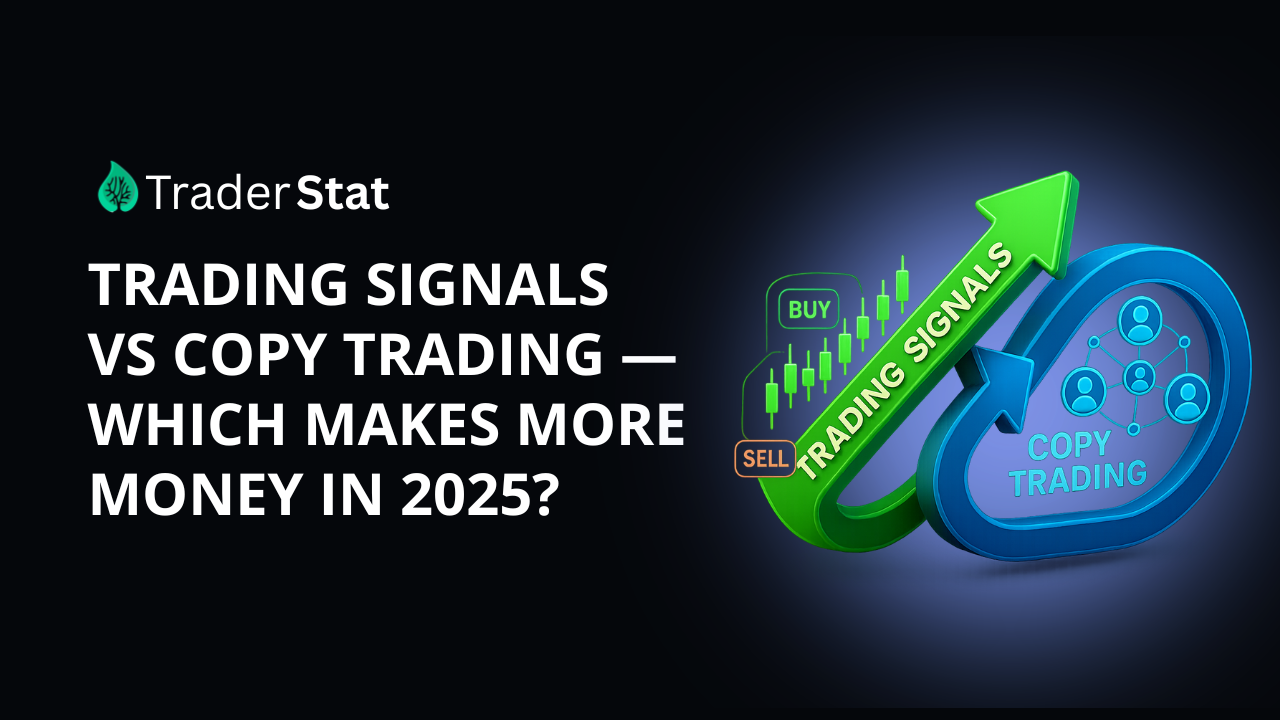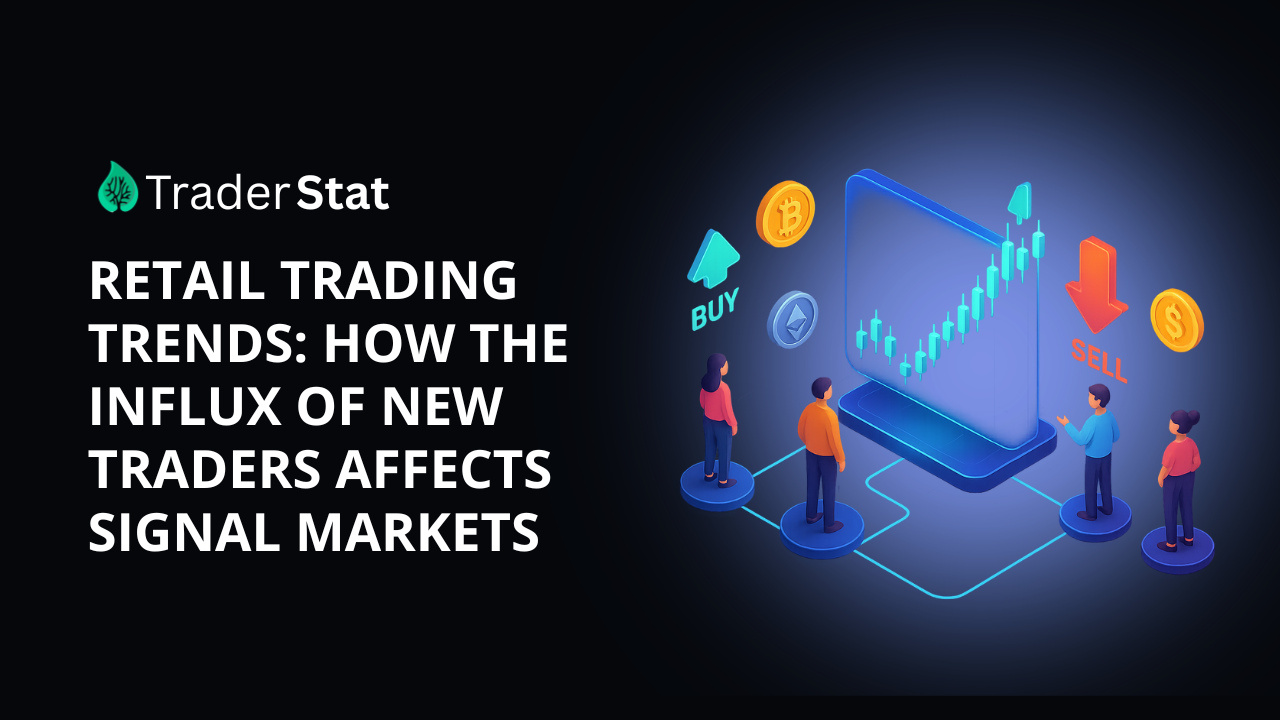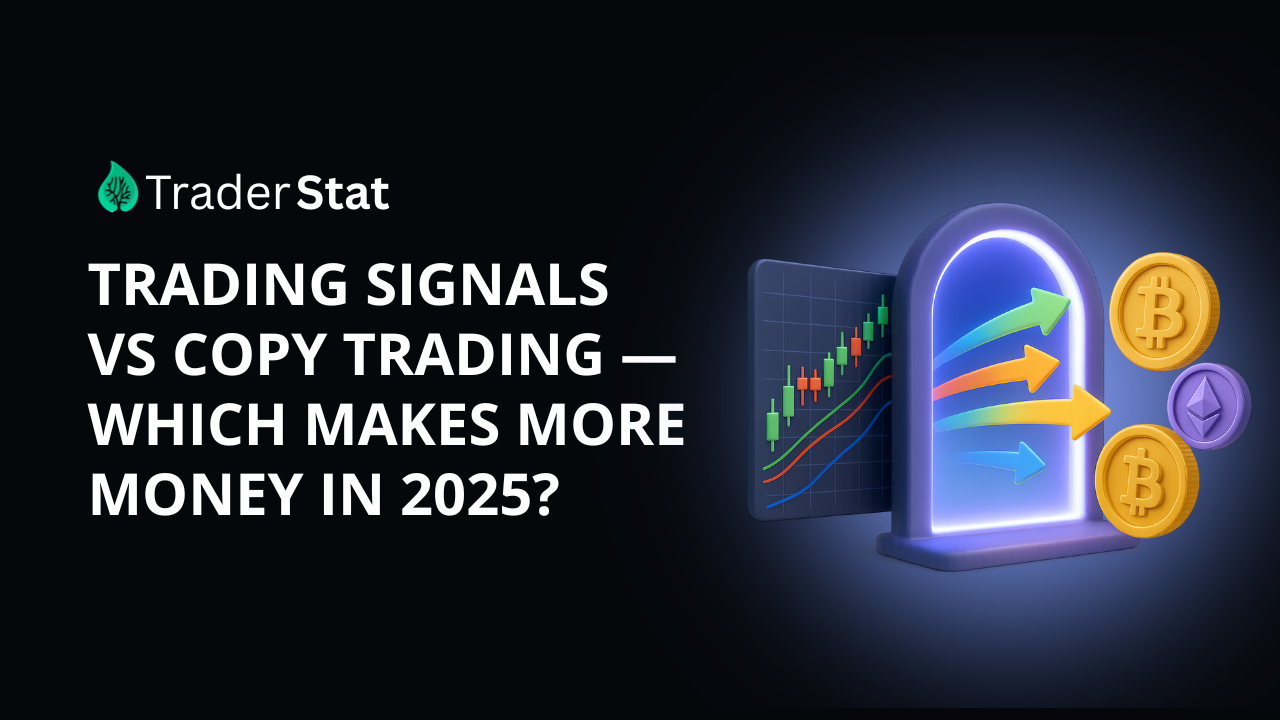
Trading Signals vs Copy Trading - Which Makes More Money
Introduction
You’ve studied the charts, read the news, and maybe even tried a few “sure thing” trades… yet your portfolio keeps shrinking. It’s a familiar story for new traders, and even seasoned ones can struggle when emotions or market volatility take over. That’s why many turn to two popular shortcuts: trading signals — expert or algorithmic alerts telling you when to buy or sell — and copy trading, where you automatically mirror the moves of experienced traders.

Both promise a faster route to profits without reinventing the wheel. But here’s the million-dollar question: Which approach delivers more consistent, long-term returns? The answer depends on more than win rates. Risk control, fees, market conditions, and even your personality can all tip the scales. In this guide, we’ll break down exactly how each works, compare their real-world performance, and uncover the key factors that determine which is the best way to make money trading for you.
What Are Trading Signals?
Trading signals are actionable recommendations to enter or exit a trade, typically specifying the asset, entry price, stop-loss level, and take-profit target. They can be generated through:
-
Technical analysis: Based on chart patterns, indicators, and historical price data.
-
Fundamental analysis: Driven by economic data, earnings reports, or macro events.
-
AI-based models: Using machine learning to detect patterns too complex for manual analysis.
Signals can be delivered via email, SMS, mobile apps, or integrated directly into platforms like MetaTrader or TradingView.
Advantages of Trading Signals
-
Customizable: You can choose which signals to act on, adjusting position size and risk.
-
Educational: Following signals while analyzing their reasoning can improve your trading skills.
-
Lower costs: Many providers charge a flat subscription fee rather than a percentage of profits.
Drawbacks of Trading Signals
-
Interpretation required: Not all signals fit every trader’s risk tolerance or market view.
-
False positives: Even high-quality signals have losing trades; no system is foolproof.
-
Emotional bias: Traders may override signals due to fear or greed.
Profitability? Backtesting studies often show win rates of 60–70% in favorable, trending markets, but these rates can drop below 50% during volatile, news-driven periods. For example, a well-optimized forex signal service might average a 10–15% annual return after accounting for losing streaks and slippage. However, disciplined traders who filter signals by additional criteria can improve results.

What Is Copy Trading?
Copy trading allows you to automatically mirror the trades of professional or high-performing traders. When they buy or sell, your account executes the same trade in proportion to your allocated capital. This is typically done through social trading platforms.
How It Works
-
Choose a trader: Browse performance stats, risk scores, and trade history.
-
Allocate funds: Decide how much capital to commit to copying.
-
Automated execution: Trades are replicated in real-time (or with slight delay).
-
Adjust or stop anytime: You can change allocations or stop copying at will.
Advantages of Copy Trading
-
Hands-off approach: No need to analyze charts or track news.
-
Diversification: You can follow multiple traders across different markets.
-
Access to expertise: Learn indirectly from seasoned professionals.
Drawbacks of Copy Trading
-
Dependency: Your results are tied to another trader’s decisions.
-
Performance fees: Some platforms charge up to 20–30% of profits.
-
Execution lag: Delays can cause different entry/exit prices than the original trader.
Earnings Potential? Data from public leaderboards (e.g., eToro, ZuluTrade) shows top copy traders sometimes post annual returns of 20–50%, but the average for followers is closer to 5–15% after fees. In market downturns, even top traders can suffer steep drawdowns — sometimes exceeding 30–40%.

Head-to-Head Comparison: Which Makes More Money?
When evaluating trading signals vs copy trading, the decision comes down to more than raw returns.
| Factor | Trading Signals | Copy Trading |
|---|---|---|
| Control | High — you choose which trades to take | Low — fully reliant on provider |
| Time Commitment | Moderate — requires monitoring and execution | Low — automated |
| Learning Opportunity | High — teaches strategy and analysis | Moderate — observational learning |
| Fees | Usually fixed/monthly | Often profit-based (20–30%) |
| Average ROI (per studies) | 10–20% (disciplined use) | 8–12% after fees |
| Risk of Overtrading | Higher — emotional influence possible | Lower — but depends on provider’s style |
| Best Market Conditions | Trending markets | Sideways or mixed markets |
Analysis
-
Returns: Skilled traders using signals can outperform copy trading by 10–20% annually, but only if they stick to their plan.
-
Risk-adjusted performance: Copy trading often shows a more stable Sharpe ratio because professional traders generally use consistent risk management.
-
Costs: Signals win here, as fixed fees don’t eat into compounding profits.
-
Scalability: Copy trading scales well for large accounts, while signal execution might require faster, more advanced setups.
Example scenario:
-
Trader A uses high-quality forex signals, wins 65% of trades, averages 1.5:1 reward-to-risk, and achieves 18% annual return.
-
Trader B copy trades a top eToro investor, sees 24% gross return, but after 20% performance fees and slippage, nets 18–19%.
Result: Nearly identical — but Trader A had to work harder for it.

Conclusion
So, which makes more money — trading signals or copy trading?
There’s no universal winner. For self-directed, disciplined traders willing to learn and manage risk, signals can produce higher returns and build long-term skills. For time-poor or beginner investors, copy trading offers a smoother, more consistent path — albeit with lower net gains due to fees and dependency risks.
A hybrid approach can work well: use copy trading for steady, diversified exposure while applying trading signals selectively on markets you understand best. Whichever you choose, focus on risk management, due diligence on providers, and realistic return expectations.
Next step: Try both in demo accounts first. Track performance for at least 3–6 months before committing real capital — and always invest only what you can afford to lose.

